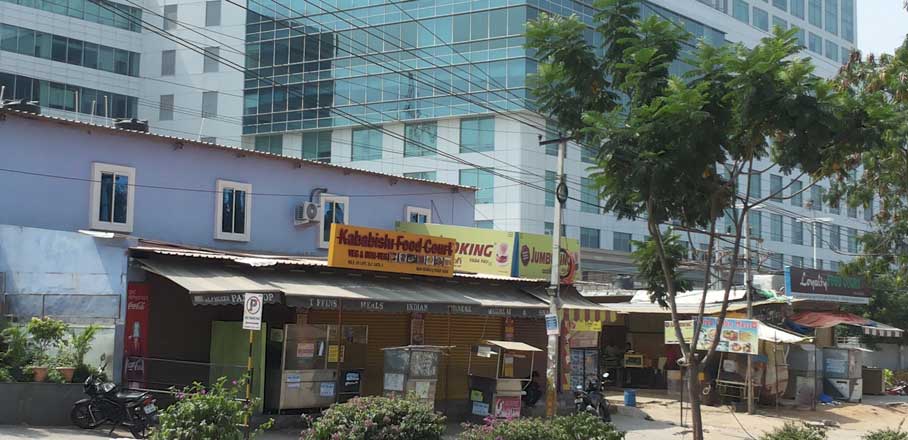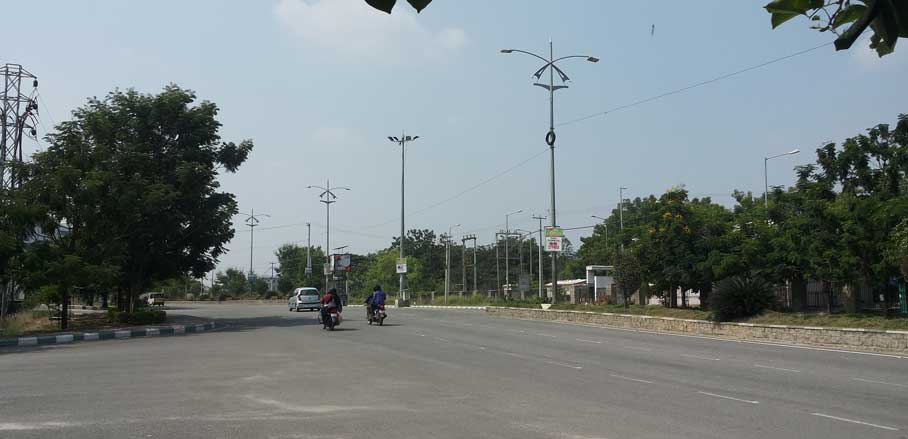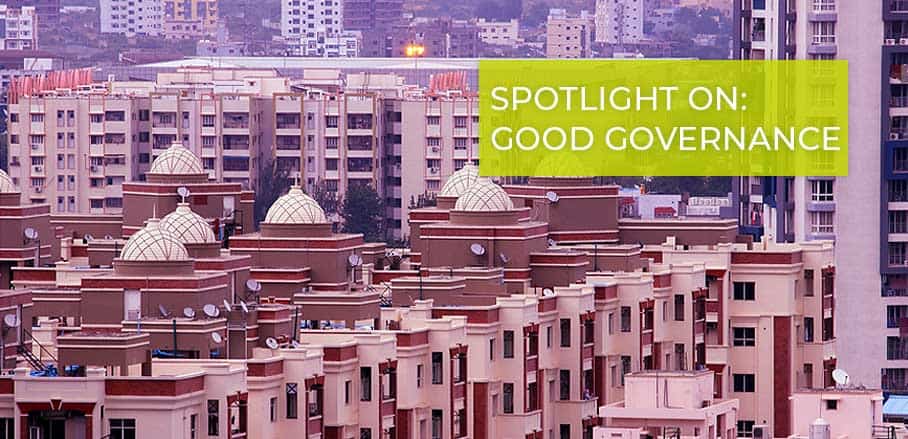Industrial Policy Makes Indian Cities
The agencies with the greatest influence on urban outcomes in Indian cities are those that write industrial policy, says Ashima Sood.
Infrastructure is critical to growth. That is a cliché of economic development policy. Less appreciated is the role of infrastructural governance. This is the set of institutions and arrangements that determine how decisions about the location and allocation of infrastructural services are made, about who is included, who is excluded and how disputes are resolved.
In many Indian cities, infrastructure governance is increasingly determined not by municipal governments, or even ministries or departments of urban development. Instead, they are driven by government ministries and departments that write industrial policy. As a result, economic policy shapes the spatial imprint of Indian cities in little-understood but predictable ways.
The Food Market and the Financial District: A Study in Contrasts
Hyderabad, an Indian megacity expected to cross 10 million in the 2021 Census, offers a useful case study for understanding the ramifications of this gap. On the one hand, the spatial distribution of land use across the city appears to have little to do with government planning or regulation. Zoom into the western peripheries of the Hyderabad Masterplan 2031, and you would see a patchwork of land use zone classifications – commercial, multiple-use zone, conservation – that appear to have only a tangential relationship to the reality of spatial action on the ground.
Consider the so-called ‘DLF street food market’, a fast-transforming avenue of small-time cafes, restaurants and tiffin joints that used to be a housing colony. The area was originally government housing provided for low-income residents. It has since witnessed a near-explosive makeover. Over the last half-decade, new storefronts have burgeoned practically overnight, even as the houses are converted to paying guest hostels, schools, cafeterias and salons for a rapidly growing population of young information technology (IT) workers. Some of these professionals find employment in the DLF IT Special Economic Zone (SEZ), from which the Food Street derives its name, though none of its sponsorship.

© A. Sood, 2015
But others also commute to work across the road in the metropolis’ new Financial District and IT Park. Although only a couple of kilometers away, this is a landscape of IT and educational ‘campuses’ – from the Indian School of Business to Microsoft, Infosys and Wipro – to bank headquarters and SEZs, with little of the informal bazaar energy that animates its counterpart across the road. There is none of the variety of storefronts and establishments characteristic of the DLF street food market. The food stalls here are collapsible affairs, ready to move at short notice, setting up for designated hours and then moving away.
Municipal versus Corporate Government
One reason why the two neighbourhoods look so different may be the unique form of government that the Financial District and IT Park lay claim to. Unlike in the housing colony and DLF street food market, which come under the jurisdiction of the Greater Hyderabad Municipal Corporation, the government here is the developer – a state government Industrial Infrastructure Corporation. Under a governance arrangement known as the Industrial Area Local Authority or IALA, the infrastructure corporation serves as the de facto government, providing and servicing infrastructure and basic services for the IT and financial services corporates, collecting property taxes and monitoring streets for obstructions and ‘encroachments’.
Unlike the municipal government, whose elected officials are answerable to all residents, the IALA is a government entity that represents the enterprises that own plots in the industrial areas and IT Parks under its jurisdiction. Armed with the substantial property tax revenues and a local office, the IALA is able to both directly enforce as well as sanction and support its corporate constituents in efforts to keep the public spaces ‘clean’ and free of informal encroachments.
As this author’s extensive mapping has shown, it is in the areas outside the IALA’s boundaries and in the municipal corporation jurisdiction – in the housing colony around the DLF street food market and erstwhile villages such as Nanakramguda and Gowlidoddi – that the vast majority of the workforce of these corporates finds housing and retail services, from food to beauty salons and couriers. These are the areas witnessing the fastest growth in enterprises and population. However, they remain poorly endowed with basic services. Potholed and sometimes non-existent roads, waterlogged streets, power outages, diesel generators, and water shortages, point to the fact that there is little presence and recognition by understaffed and under-resourced local municipal government offices.

© A. Sood, 2015
Infrastructure Governance Shapes Basic Services Disparities
The IALA and the specialised governance paradigm it brings to bear are key elements of the Telangana state industrial policy framework and are widely applied in government developed industrial areas and IT Parks. IALA infrastructure governance has three key dimensions. First, the nature of infrastructure provision is largely spatially targeted to areas under its command, with little attention to surrounding areas. Second, representation and accountability in the IALA focus on enterprises, rather than workers or other stakeholders. Third, the IALA retains the bulk of revenues collected in its jurisdiction. A key outcome is urban growth that is unsupported by resource or public goods allocation.
As this author has argued, such forms of infrastructure governance are increasingly rife in Indian industrial policy. Policy frameworks such as the SEZs or Gujarat’s Special Investment Regions (SIRs) increasingly deploy similar forms of privatised local government alongside high-quality infrastructure provision within their boundaries. As the late KC Sivaramakrishnan, an architect of local government empowerment noted, submissions by the urban development ministry found little purchase in the policymaking process in the SEZ policy.
At the same time, as the authors Partha Mukhopadhyaya and Kanhu Pradhan along with Rob Jenkins and Loraine Kennedy have found, the vast majority of these SEZs are located in urban and megacity districts. Thus, the spatial patterns engendered by the IALA are likely to find resonance in many other urban areas.
Intended or not, unregulated and poorly provisioned urban growth may thus be a predictable outcome of infrastructure governance that is kept outside the realm of democratic decision-making at the local level. In this way, industrial policy makes Indian cities. Local governments can only play catch up.
- Industrial Policy Makes Indian Cities - 29. August 2019
